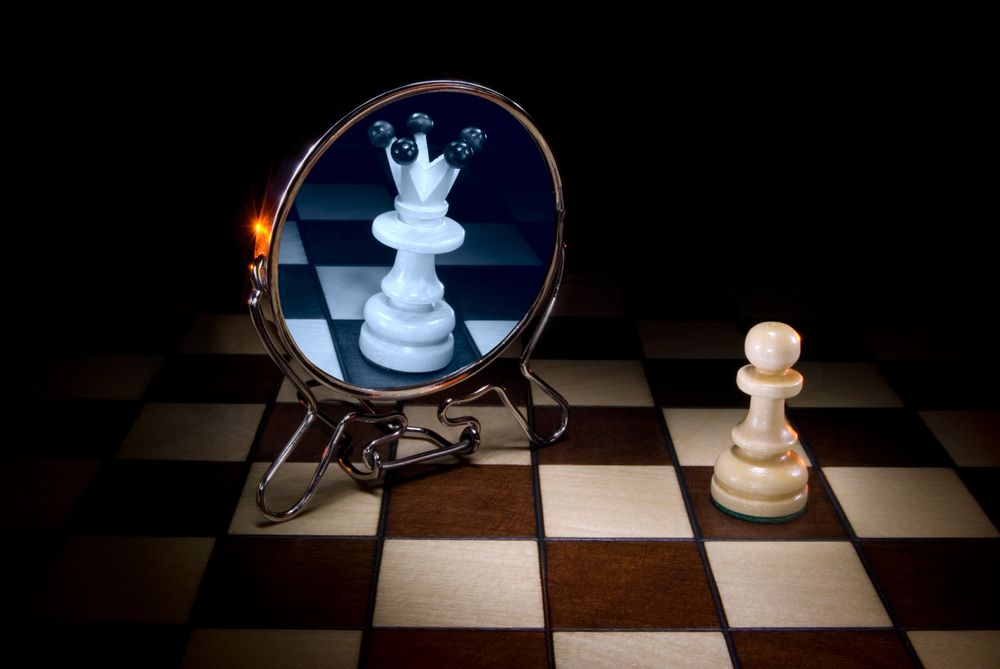
Do You Know How To Promote A Pawn?
The question in the title of the article might surprise you.
Indeed, what can be easier than pushing your pawn to the back rank and choosing a piece you want it to become?
In reality, there are more problems arising from a pawn promotion than you might imagine. There are many reasons for this sad phenomenon. Partially it is FIDE's fault for its tendency to complicate chess rules. There was a chess joke in my youth years that the best chess arbiter is the one who is invisible during a tournament. Indeed, if after such a tournament the players are not even aware who was a chief arbiter, it means that there were no unpleasant incidents or conflicts during the event.
Of course that is the main skill of a good tournament director: to prevent any problem before it even appears. These days chess arbiters need to be accredited by FIDE and consequently they have to participate in the endless arbiter seminars. It is a very profitable business for FIDE and therefore it makes perfect sense for it to make chess rules more and more complicated, inventing doping tests, "zero tolerance" rules, etc.
I already expressed my opinion on this topic in this article long time ago. Even such an innocent rule as a pawn promotion got affected.

Case in point is the following episode from the Women's World Blitz Championship. As you probably know, an illegal move is punished by an instant loss in blitz, so it is extremely important to follow the official rules. The woman who played White promoted her pawn by playing b7-b8=Q; what could go wrong? Well, she put her new queen on b8 and simply removed the b7 pawn from the board. As the result she lost the game for an illegal move.
It is both funny and sad to watch arbiters teach an international master how to promote a pawn. That is, you are supposed to first push the pawn to b8 and only then replace it with a queen. [In fact removing the pawn and putting the new piece on the square of promotion is allowed, in any order. — Ed.]
I feel very sorry for the woman since for most of chess career I promoted my pawns exactly same way: by putting a new queen on the eighth rank and removing the pawn from the seventh rank without actually moving it. Moreover, by my personal observation, this is exactly how most titled players executed this supposedly simple procedure.
These days, when it looks like FIDE re-writes the rules on a monthly basis, you can never be sure. It is the sign of the times that a well-known Russian GM and trainer admits on Facebook that he doesn't know anymore how to promote a pawn.
Here is the video of this painful episode with the English subtitles:
Of course it wouldn't be fair to blame FIDE for all the problems since in some cases it is clearly the chess player's fault. Look at the next video, where GM Topalov pushed his pawn e2-e1 and pressed the clock without replacing the pawn with a piece. While it is absolutely clear that he assumed promotion into a queen, nevertheless the move is illegal!
A similar situation happened in the famous game between Kasparov and Karpov. Fortunately the consequences were less dramatic because in regular non-blitz tournaments, an illegal move doesn't cause an immediate forfeit. Look at the following diagram:
Here is how Wikipedia describes what happened:
Karpov was in serious time trouble, with one minute to make 16 moves. In this position, Kasparov captured the rook on d1 with the pawn on c2, and said "Queen!", indicating that the promoted piece was a queen. However, no queen was immediately available. It took some time for the arbiter to come up with a black queen. Kasparov said that if he had been attentive, he would have promoted to a rook, which was available. Kasparov's clock was running while the arbiter was getting a queen, so he started Karpov's clock. Karpov immediately played 25.Qxe4 and Kasparov told him that he was in check. Karpov replied "From what? It might be a bishop on d1." The clocks were stopped. The arbiter found a black queen, the game was backed up to the position after 24...cxd1=Q+, and Karpov was given an extra two minutes on his clock because of Kasparov's illegal move (since starting the opponent's clock signified the completion of his move, which was not possible without a piece to promote to).
Finally, sometimes such incidents are purely the arbiter's fault. We already discussed this subject in this old article. A very unpleasant incident happened in the tie-break game that was supposed to determine the winner of Canadian Zonal tournament that finished last month. First look what happened there (start from 14:15).
I am not going to discuss the equipment, which looks more suitable for a nice game in a park. But with no fewer than three pawns racing to the back rank, the tournament director, who was watching the whole game with no interruption, should have asked himself a very simple question: "Where are the queens?"
You see how easily the whole incident could have been prevented!
By the way, here is a puzzle for the most attentive readers: where was the black queen at the moment Black needed it the most?
Finally, the most important part of this article is to help you to prevent such problems from appearing in your games. So what should you do? Here is the extract taken from the relevant page of the official USCF website where it explains the differences between FIDE rules and USCF rules.
The FIDE rules:
If the player moves a pawn to the last rank and presses the clock without replacing the pawn with a promotion piece, the player has completed an illegal move (see item 5 for implications) and the pawn shall be replaced by a queen of the same color as the pawn. The player has no choice in the promotion piece,
even if promoting the pawn to a queen causes stalemate.
It is illegal to use an inverted rook to mean "queen" when promoting a pawn. If a promotion piece is not readily available, the player must stop the clocks and ask the arbiter for assistance.
The USCF rules:
If a player does not replace a pawn on the last rank with a promotion piece and presses the clock, the opponent may immediately press the clock or stop the clock and summon a director (advisable in
an increment time control). The player does not lose the right of choice of promotion piece.
The US Chess rules explicitly state that, when promoting a pawn, an upside-down rook is to be considered to be a queen.
I wish you many happy (and legal!) pawn promotions!



